Tag Archives: video
Spring sunrise over Promontory Point
Letchworth State Park waterfalls at half speed
Same video at half speed. More relaxing.
Jellyfish, or jellies, at John G. Shedd Aquarium
These videos were shot December 11, 2011, with an Olympus Stylus Tough pocket camera at a very crowded exhibit. I risked my life to get this close without upsetting any parents. A soothing way to spend a late autumn day.
Letchworth State Park waterfalls
My dad, persistently frustrated by cheap cameras, would be amazed by what you can do with something that fits into your pocket. He would be more amazed and likely appalled by how much such a thing costs. I know he’d envy my photos and videos of Letchworth, though. From late May 2015.
Maple Sugar Time at Chellberg Farm, 3/7/2020
Last year’s Maple Sugar Time at Chellberg Farm was not productive. The daytime temperatures were too cold for maple sap to run. I remember someone saying they used water in the sugar shack — there wasn’t enough (or any?) sap for the demonstration. It was still fun and informative, even without the star attraction — maple sap.
This year’s a different story. Maple sap is pouring out of the sugar maples — literally. This extractor was filling every five to six minutes. At 2 p.m., the tub was about one-third full. By 4 p.m., it was nearly two-thirds full.
The warm air, sunshine, and freely flowing sap gave the day and everyone involved energy. We had our traditional Lions Club breakfast at 2, then checked out all the stations on the trail to the farmhouse.
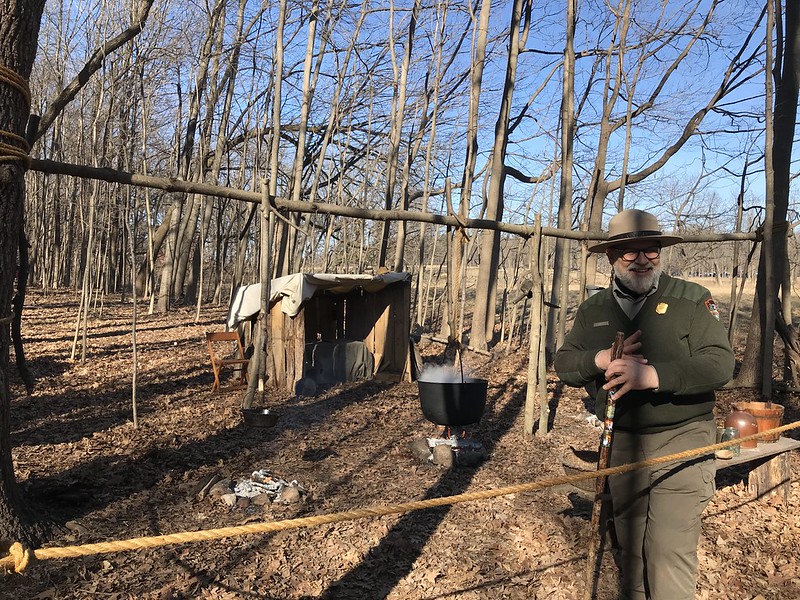

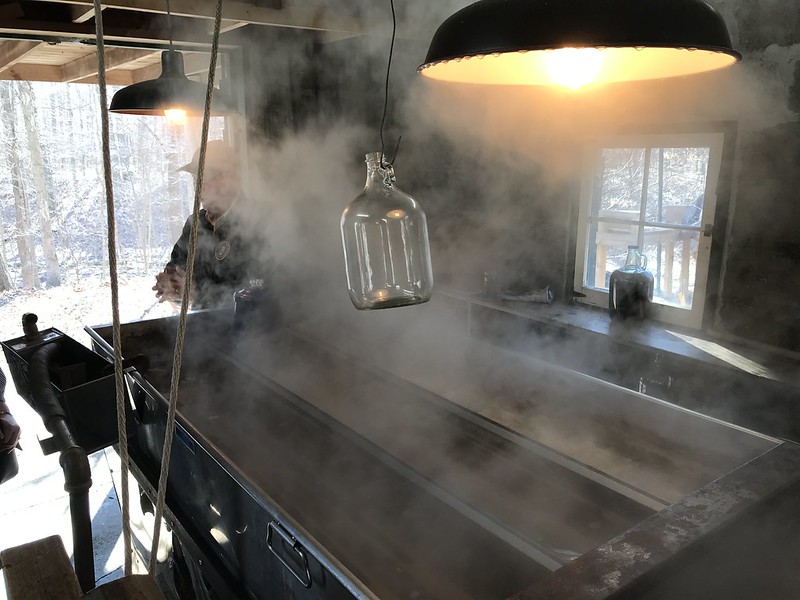

After picking up some goodies (maple syrup, maple cream, maple water, and an Indiana Dunes National Park mug), we also visited Chellberg Farm’s current animal helpers, starting with Belgian team Bill and Jack.

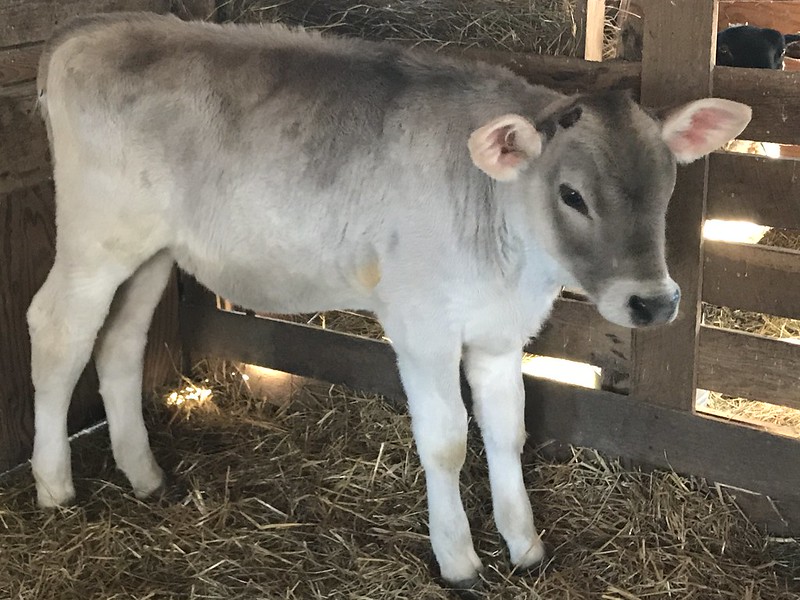
After a stop at the Schoolhouse Shop and Tiger Lily’s for dinner, time to go home and rest my own sap.
Downy and hairy woodpeckers
December 8, 2019, at Indiana Dunes State Park Nature Center
I’m a little slow but one day years ago when I saw a woodpecker at Promontory Point I realized there are two in the field guides that look very similar — the downy and the hairy. One is smaller but I could never remember which.
Smaller isn’t a good field sign if you haven’t seen both and you’re not sure of the relative proportions.
On a July 2018 visit to Indiana Dunes State Park Nature Center, two woodpeckers happened to land on opposite sides of the same feeder, facing each other. In that moment, I couldn’t miss the most obvious differences between the two, despite the similarity (mostly) of their plumage.
The downy is quite diminutive when seen across from his larger cousin, the hairy. More than that, the downy sports a delicate stub of a bill compared to the hairy’s railroad spike — the bill is almost the length of the hairy’s head.
Finally I got it. I will not have trouble identifying either again. There are other differences, but that bill is the most obvious. Now I have in mind: “downy=diminutive” — body size and bill.
As a side note, the downy is the one you’re more likely to see at your typical suburban bird feeder. I can’t be sure at this late date, but the downy is likely the one my dad fed with free suet from the local butcher.

According to Audubon, the hairy requires larger trees and is less likely to show up at suburban feeders or city parks. I’ve seen enough of them at the nature center to know that area (and their feeders) suit the hairy just fine.
Horseshoe Curve National Historic Site, Tytoona Natural Area Cave Preserve
September 5

In December I’d checked out Horseshoe Curve from the parking lot, but hadn’t been up to the top since September 1988 — er, 31 years ago . . . Not long after, a visitor center and 288-foot funicular were built and opened in 1992. Not knowing anything about the funicular, I was surprised to find it doesn’t run constantly, only on the hour and half hour.
We spent about 15 to 20 minutes looking over the exhibits while waiting. I appreciated the one showing how the Curve had been carved out — I’ve never been able to visualize it or how it would have looked before. Another highlighted the wreck of the Red Arrow in 1947, which killed two dozen and injured more than 100.
The funicular cabins, which were made in the Durango and Silverton Railroad shops in Colorado, ascend and descend at the same time. They pass at a circle part of the way up (or down). I expected the cabin to veer to its right, but they swing to the left to pass. Very British.
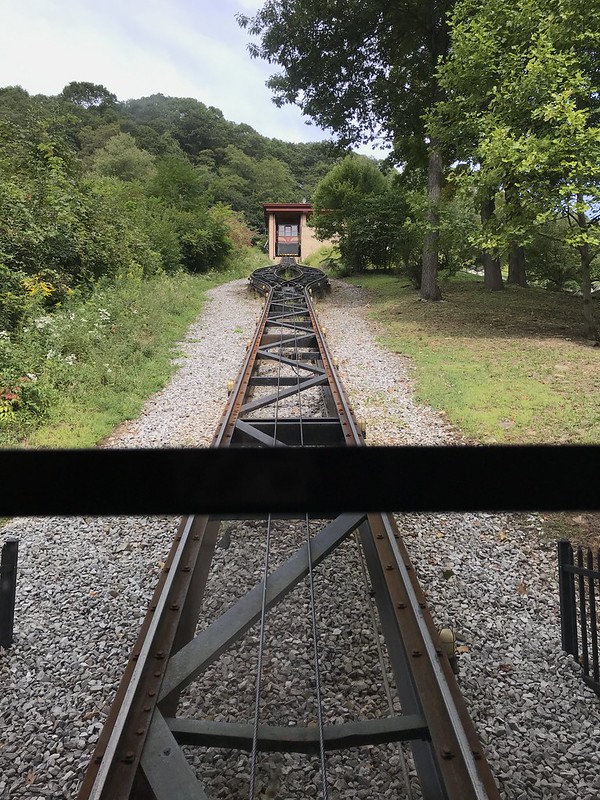
Up top the cars from the summer derailments (two!) are visible but not close. We’d picked up a list of scheduled trains at the visitor center, but am not sure we matched any that went by to it — certainly not the “Oscar” (trash train) heading west. In addition to the Oscar, we saw an intermodal plus helper locomotives returning in pairs as they do. No Amtrak — the eastbound Pennsylvanian had gone through earlier. I’d be on the westbound Pennsylvanian later in the afternoon, while it was still daylight.


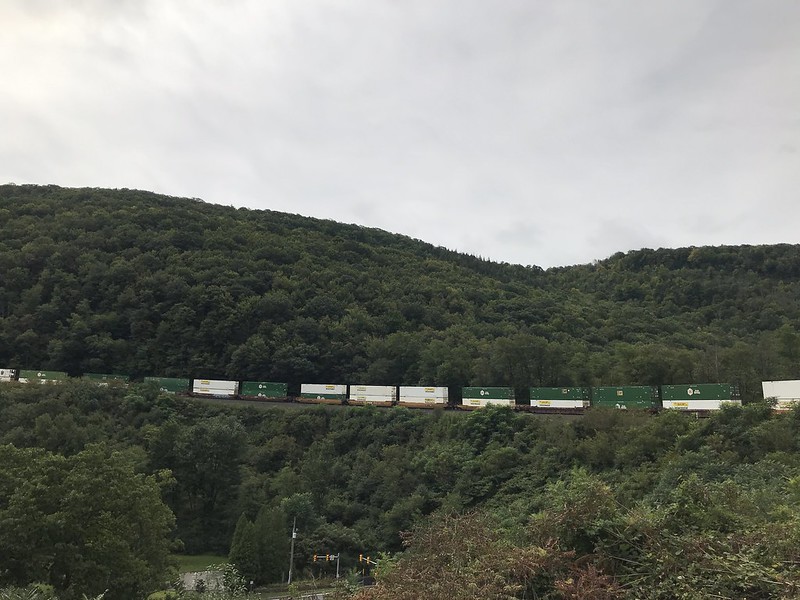
While we watched the trains we found ourselves plugging our ears. One thing I didn’t remember from all those years ago was the screech of metal on metal, the wheels and brakes as they fight the curve and the incline.
It seemed fitting we got a wave from the locomotive of the last train we saw — one of the few times I’ve seen a woman engineer.

Our final shopping stops were Hillside Farm, where I bought whoopie pies, and Ridgeside Cider Mill, where V. picked up their first cider of the season and I added to my soap collection.

Years ago a relative had posted about Tytoona Cave (more formally, Tytoona Natural Area Cave Preserve), the name an awkward mashup of “Altoona” and “Tyrone.” Previously, its location had seemed a mystery to me, and December wasn’t the best time to visit it. I’d looked again recently and found out it’s connected (more or less) to Arch Spring in Sinking Valley which my cousin had pointed out to me a couple of years ago. Now I could find it easily on Google Maps — as it turns out, it’s on T495 off Kettle Road, less than a half mile from Ridgeside Cider Mill. Off we went.
There’s a slight cutout parking area, with the trail entrance marked by green barrels. Steps, some eroded, built in 2001 by the Tytoona Cave Preserve Committee and members of the Huntingdon Co. Cave Hunters, lead down into the sinkhole. Normally a stream flows into the cave, but it was bone dry. This made walking in without hiking shoes a lot easier.


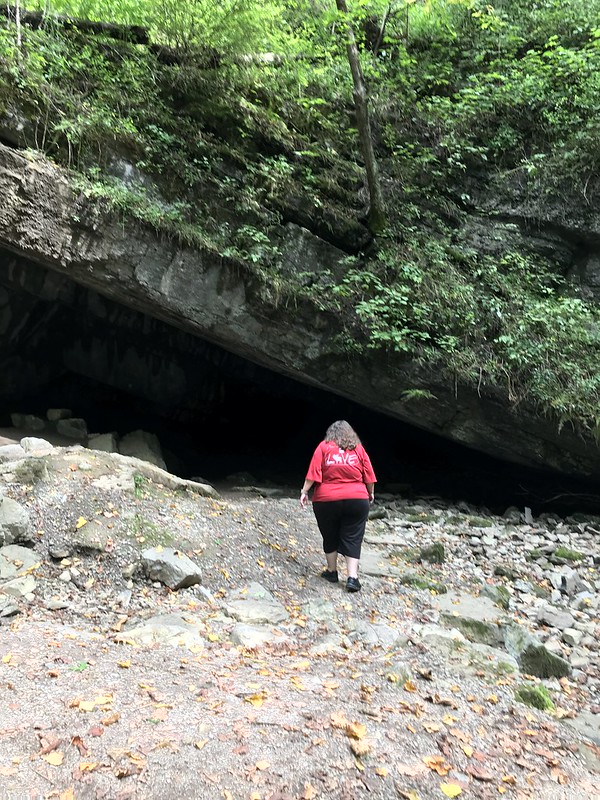
If you walk far enough into the cave, you can sign a register. I didn’t make it nearly that far. I didn’t have a flashlight, and was surprised by how dark it became a short way in. It’s easy to see why people in Tytoona Cave videos wear helmets with headlamps — it’s too dark to see the low ceiling that your head will hit.
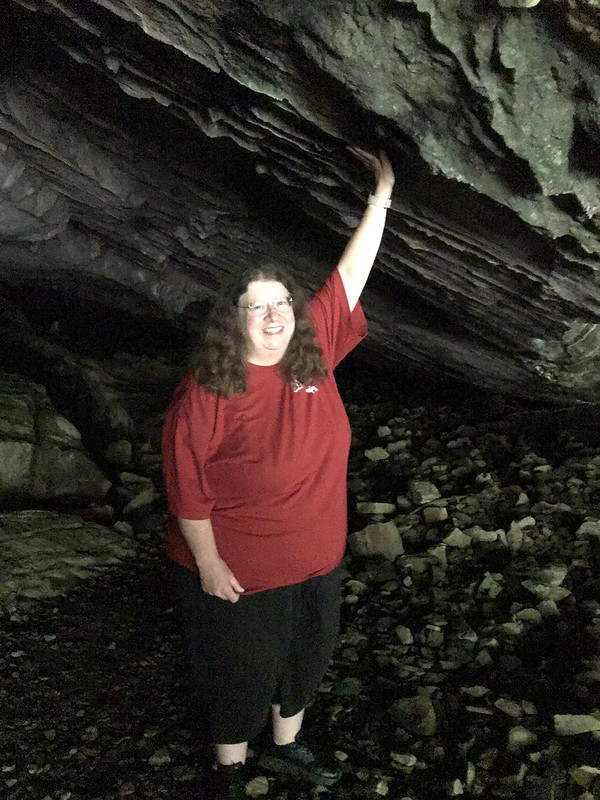



The stream bed through the sinkhole may have been dry, but there was running water somewhere in the darkness. In this video, the cave walls and ceiling amplify the sound, but I suspect the cave’s water would make a respectable noise without the help.
It felt weird and creepy to hear water rushing nearby without being able to see it. If I’d had a light, a helmet, and a better physique, I wonder if I could have gone as far as the register or even the first sump . . .
On the way out, we saw a poster about Pennsylvania bats. Short version: Tytoona Cave is not the best place to find them.

And so back to packing for the return trip on the Pennsylvanian and Capitol Limited.
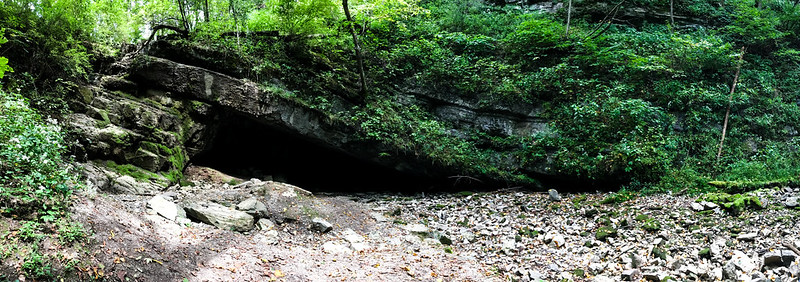
Pennsylvania: Mountain pie cookout and corn boil
August 30–31
My journeys on the Capitol Limited and Pennsylvanian were uneventful. The Capitol Limited arrived in Pittsburgh 40 to 50 minutes before the Pennsylvanian left, so it was a little close — but no Greyhound this time. I got my eastbound trip around Horseshoe Curve, although by looking to the inside I missed the derailed center beams on the outside – on both sides. (There were two derailments at the Curve this summer.)
I arrived in plenty of time to go on an outing to load up on spring water at Elk Run near Tyrone. Many, many bald-faced hornets were feasting on the plants by the stream.
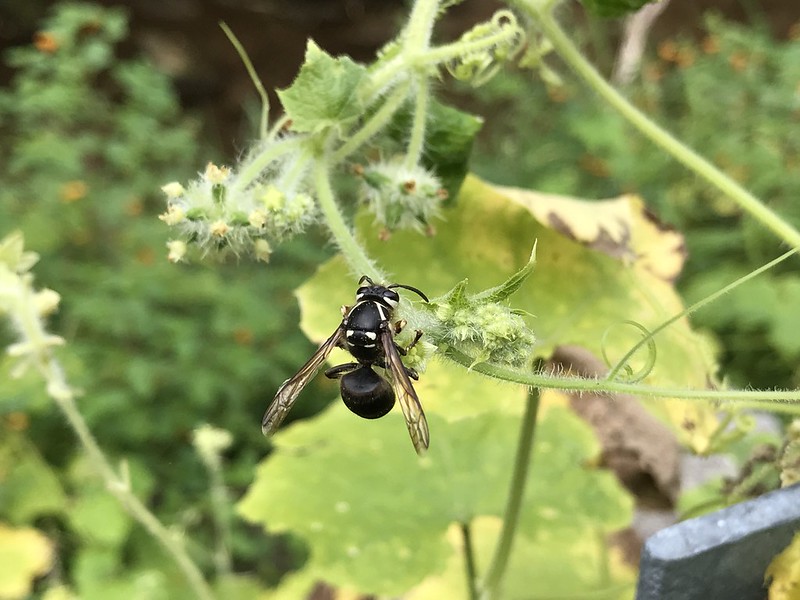
We also stopped at a farm in Sinking Valley to pick up what turned out to be the last corn on the cob of the season and later shuck it for an evening “mountain pie/hotdog cookout and corn boil.” I wish I’d taken a photo of my ham and cheese mountain pie. Delish.
Matthaei Botanical Gardens
June 26, 2019
Having worked out Lyft, my next objective was Matthaei Botanical Gardens. I’d been there before without noticing it’s down the road that runs north of Parker Mill. Gallup Park is on the way to both. After how many years of visiting Ann Arbor, I’m finally figuring out the geography.
I also spotted several places from which the Huron River looks accessible. After visiting Minnesota’s North Shore a couple of times, reading The Journals of Lewis and Clark, and digging into a textbook on earth science, I’ve developed a new appreciation and love for rivers and all their variations (streams, brooks, creeks — or “cricks,” as my dad would say). They shape the land and weather, offer passage to humans and wildlife, provide food, contribute to the economy, join and separate nations, and hold countless secrets from throughout the ages. Just ask the Tiber.
At Matthaei, I found one of the things I’d been seeking — a bowl of plants surrounded by kaleidoscopes. I wanted to we if I could improve on my previous efforts to record it. It’s not easy to aim the phone camera precisely at a kaleidoscope eyepiece, hold the clunky phone sideways steadily, and spin the bowl. I didn’t succeed at spinning the bowl either slowly or at an even speed. I swear my anxious exertions and the pain of standing for a few minutes made me pant..
I headed through the rest of the greenhouse, but didn’t look or linger — it was too hot, for one thing. I went outside, hoping to find flowers laden with butterflies and bees. Instead I found neither much in the way flowers nor butterflies. Perhaps earlier in spring or later in summer.
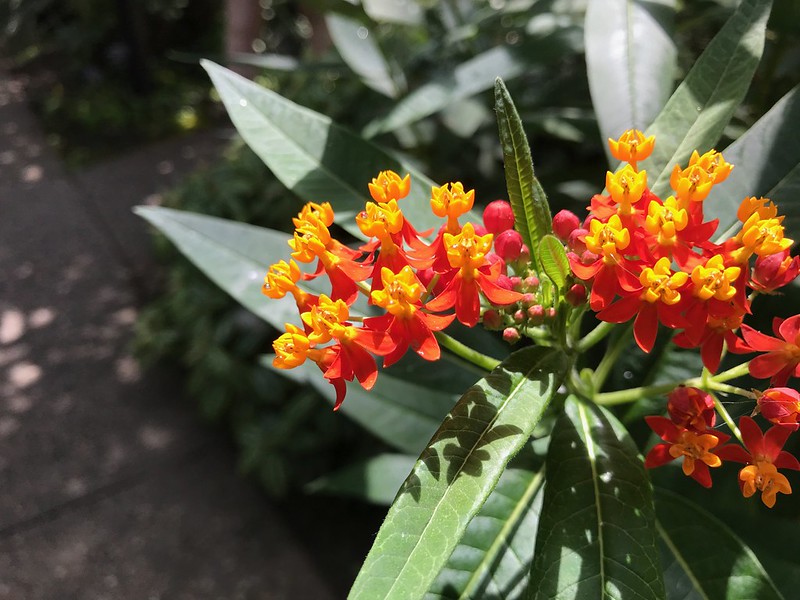
Next, I wanted to a better video of the wind-spinner sculpture I’d seen on a previous visit. If I had a yard, I’d want something like this in it. My dad, I think, would have loved it (but not the price tag, I’m sure, for anything similar).
I turned toward the Gaffield Children’s Garden, where there’s a “rustic” trail through a wooded area, with benches along the way. It would have been perfect but where there’s shade, there are mosquitoes. Many mosquitoes. At one point the one bothering me turned into a dozen swarming me.
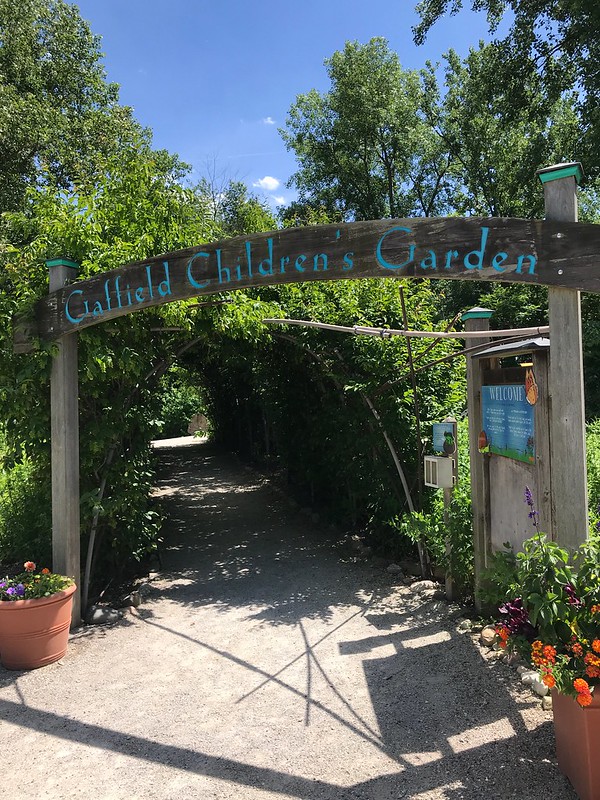


I left the rustic trail for an Adirondack-style chair in a dappled area — slightly cooler than full sunshine, but not as infested as full shade.
A tiny bird, species unknown to me, landed on a birdhouse and called back and forth with another bird, with long breaks for preening. A few people came along, but most of the time there was no one about. I liked the feeling, a little like being retired, although I’d have expected more summer visitors.
Gaffield has pretty features, even if they are artificial. I can imagine I’m enjoying a bubbling mountain stream. (I can’t, however, imagine the mosquitoes away.)
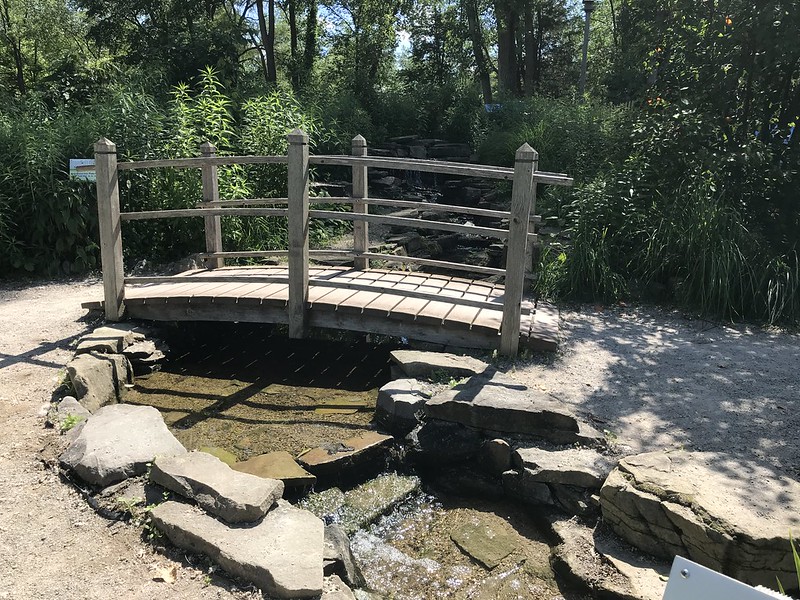
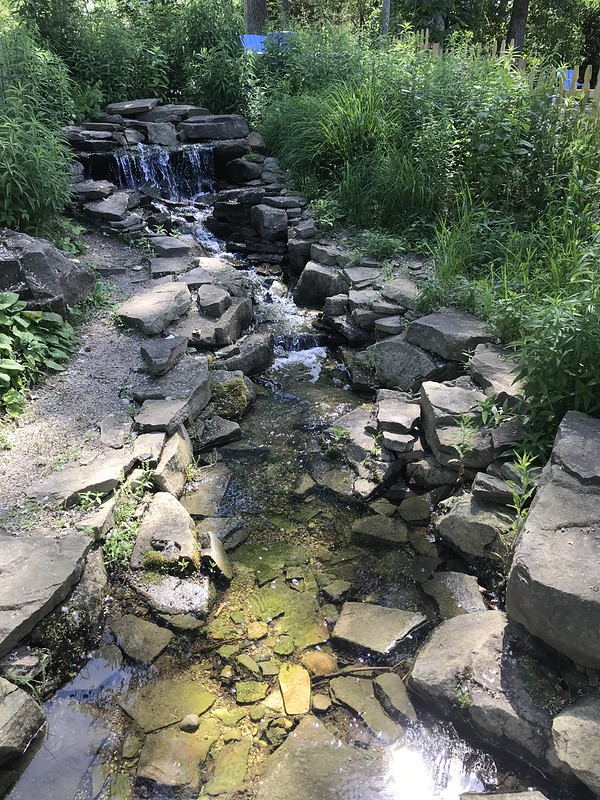
After more wandering and sitting, a peek at carnivorous plants, and a better video of the spinning plant bowl, I stopped at the gift shop and bought souvenirs, including an embossed Green Man tote bag as a gift. If there’d been one more left, I’d have been even poorer.
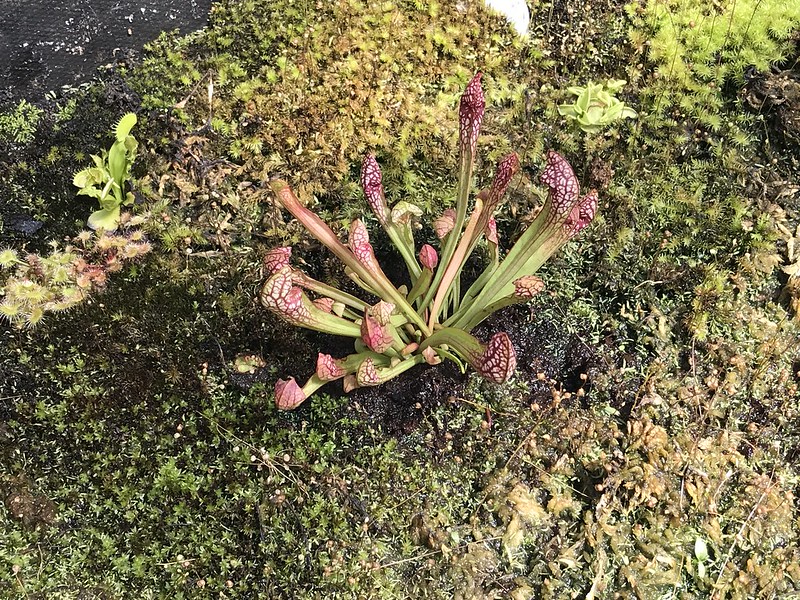
While looking at stalled traffic from the window at work, I’d noticed that most cars are black, white, or gray. That’s why, when I got into my return Lyft, I praised the car’s light metallic green color. The driver told me the only way she could afford a new car was to drive it for Lyft. On the flip side, it had accumulated 12,000 miles to date. That’s a lot of rides.
And so ended my last afternoon in Ann Arbor this trip. Until we meet again

